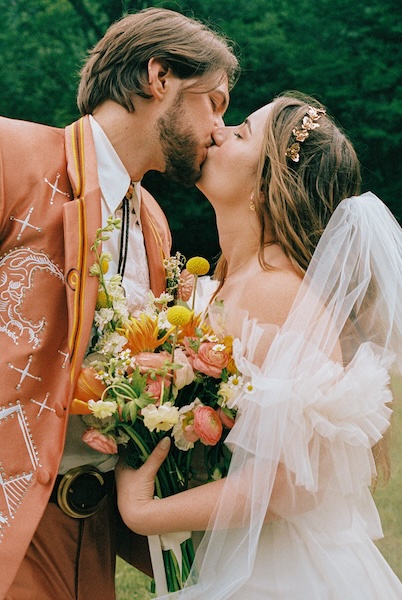American Color
April 1, 2010
By the age of 18, with his first Leica camera, Constantine Manos photographed the life of the residents on Daufuskie Island, off the coast of South Carolina. They were descendants of slaves. He also traveled to Montgomery, AL, to photograph the historic bus boycott organized by Martin Luther King Jr. and photographed the Ku Klux Klan burning crosses in a cotton field at night.
While attending the University of South Carolina, at 19, Manos sent the Boston Symphony a letter with some of his published newspaper clippings, seeking a position as assistant to the chief photographer. They liked what they saw and sent him a check for $75 to come to New York City for an interview. He was hired as the chief photographer of the Boston Symphony Orchestra at its summer music festival held at Tanglewood in Massachusetts. He says, “I packed my darkroom into the trunk of my old Ford and drove to Massachusetts; I ultimately did this job for three summers, with a break in between for two years in the U.S. Army, where I became a staff photographer for the Stars and Stripes newspaper in Germany.”
Born in Columbia, SC, to Greek immigrant parents, Constantine Manos started on his photographic path in a school camera club at age 13. By 15 he was already working professionally, covering stories for the local newspaper. He received a scholarship in photojournalism to the University of South Carolina. After his first year he was told that there was nothing more they could teach him. Manos says, “I switched my major and got a BA in English literature, which was a good thing in retrospect because I got a good education in liberal arts, including painting, art and music appreciation. I was very interested in classical music and studied clarinet and flute. I eventually played second flute in the South Carolina Philharmonic. During my years at college I photographed for the school newspaper and yearbook. In 1952 I wrote the first anti-segregation editorials ever published in the college newspaper.”
Manos comments, “Being educated in the segregated South turned me into an activist, although I was isolated in the pursuit of my feelings regarding the ills of segregation. Growing up in a Greek household in which Greek was spoken, living in a Greek community, I felt that I was an outsider in mainstream society. I thought then the United States and its people were strange but fascinating. This is probably the root of my later American Color work. I was not social in college, worked hard and was eager to work full time as a photographer.” Manos was one of the talented photographers who was with the Magnum Agency, a prestigous photographic co-operative founded in 1947 by Robert Capa, Henri Cartier-Bresson, George Rodger and David “Chim” Seymour. “My ambition was to become a member of Magnum,” he says. “I went to summer school and finished my four-year requirements for a degree in three years.”
Manos continues, “At the age of 19 I first visited the New York office of Magnum with pictures from my island work. I connected with Magnum again after my army service, but did not apply for membership because I thought I was not ready. But I did some freelance work for Magnum when they were short of photographers. In those days I did assignments for Esquire, Sports Illustrated, Look and other magazines. Meanwhile, I spent time in Boston working on a book on the Boston Symphony Orchestra, which was published as a Portrait of a Symphony in 1960. Following its publication I went to Greece to gather pictures for a book to be titled A Greek Portfolio, which was the work that got me into Magnum. While in Greece, in 1964, I received a letter from Magnum informing me that I was invited to become an Associate Member. Two years later I became a full member.”
Magnum photographers work through their four editorial offices in New York, London, Paris and Tokyo and are among the most in-demand photojournalists and editorial/commercial photographers in the world. Henri Cartier-Bresson said of the organization, “Magnum is a community of thought, a shared human quality, a curiosity about what is going on in the world, a respect for what is going on and a desire to transcribe it visually.”
Manos’ first serious camera was an American Ciroflex twin-lens reflex. In high school he owned a pair of Rolleiflex cameras and a miniature Speed Graphic. The real turning point was his acquisition of a Leica IIIf. By that time he was being heavily influenced by Cartier-Bresson, even using Ilford film after learning that was the film Cartier-Bresson used.
The basic cameras of his profession for his personal work have been Leica rangefinder cameras. In 2006 Leica sent him the Leica M8 digital camera to test. In 2007 he put away his analog film cameras and went completely digital with a pair of Leica M8.2 cameras, with his principal lens being the 28mm Summicron Aspheric. Manos says, “The move from film to digital has been relatively seamless for me, and in my new book American Color 2, there are about 20 digital pictures among the 130 pictures in the book. All the film pictures were shot on Kodachrome, the most beautiful color film ever made.”
Prior to the early 80s Manos had made literally thousands of fiber prints of his black-and-white work. When he switched to Kodachrome he realized he had to make his own color prints. When his color book American Color was published in 1995 he made a number of sets of 16 x 20-inch Cibachrome prints of the 80 pictures in the book. Manos says, “I still have these ‘vintage’ Cibachromes as well as hundreds of ‘vintage’ black-and-white prints from my years in the darkroom. I believe photographers who have worked in the darkroom making prints have more of a sense of craft than those who have not. After the demise of Cibachrome, the obvious choice for the photographer who wished to do his own color printing was the inkjet print, which has attained a high quality to match and even surpass traditional chromogenic prints. Digital printers and papers have gotten better. I now have a ‘digital darkroom’ with several printers and scanners. My favorite paper is the beautiful Silver Rag by Museo.”
Manos comments, “The digital revolution in cameras and printers has been good and bad for photography. A vast number of people are taking more pictures than ever before, mostly creating a sea of mediocrity. Digital pictures can be bigger and sharper than ever before, but size and sharpness are nothing without content and ideas. Digital manipulation has undermined the believability of photographs and the tripod has killed the moment. We have been flooded with a plethora of big and boring pictures being sold in limited editions at inflated prices. I still prefer the intimacy and manageability of smaller prints, which people can look at on a one-to-one basis.” Manos is still learning about digital workflow and relies on a tech consultant who comes in to help him and teach him new techniques.
“The world of photography has changed dramatically since I began my career,” says Manos. “When I was in high school and college I was the only professional photographer around. As for the word photojournalist, I never applied that word to myself, since it implies someone who photographs the news. The word documentary does not work for me either, since it implies merely showing what things look like. I came up with the expression ‘personal documentary’ to describe what I do. I attempt to make photographs that have a life of their own and exist for their own sake.
“My advice to young photographers is to begin doing a set of pictures that explore an idea. Assignments and a successful career are byproducts of good work. You can go nowhere until you have generated a body of work of around 40 to 60 strong images that are worthy of a book and exhibition.
“Fortunately, I have reached a point in my life where I no longer need or want assignments. I am busy working on new projects and organizing my photo archives from a lifetime of shooting. I participate in Magnum projects, such as books and exhibitions. I love photography and will never retire.”
Manos’ latest book, American Color 2, a sequel to his earlier book American Color, published by W.W. Norton & Co., contains a superb collection of new personal photographs. In an essay in the book, Alison Nordstrom, curator of photographs at George Eastman House in Rochester, NY, says, “Manos’ masterful use of color is a culmination of a career that began with similarly outstanding work in black and white, A Greek Portfolio, his 1972 tour de force.”
Constantine Manos’ photography is in the collections of the Museum of Modern Art, New York; the Art Institute of Chicago; George Eastman House; the Bibliothéque Nationale, Paris; Columbia Museum of Art, South Carolina; and the Benaki Museum, Athens. The Verve Gallery of Contemporary Photography in Santa Fe, NM, also represents him. His work has appeared in Life, Look, Esquire, and in numerous Time-Life books, including their book on Athens. He has been awarded the Leica Medal of Excellence. You may view and purchase Manos’ prints and books at www.magnumphotos.com. View more of his work at www.costamanos.com.
Paul Slaughter is a world-traveled photographer, writer and ASMP member residing in Santa Fe, NM. Paul specializes in location, stock and fine art photography. An avid jazz lover, he has an extensive photographic collection of the jazz greats. You can view portfolios of Paul’s work at www.slaughter photo.com.




